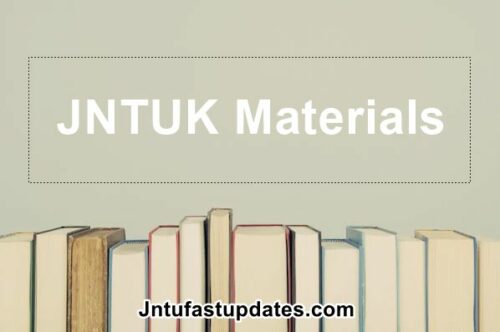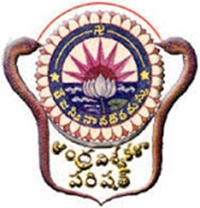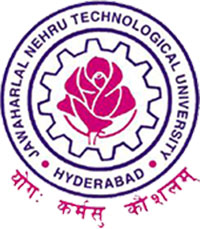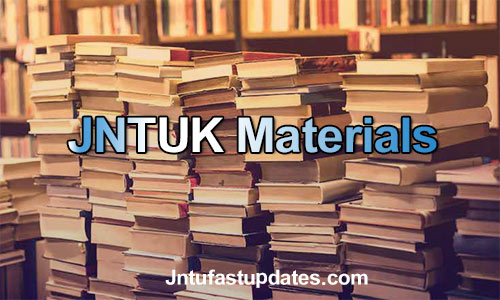JNTUH CBT & One Time Chance Exams For All Students of all Courses March/April 2021
Sub: CBT for Internal marks improvement followed by One-time chance exam for students of all courses – Reg
I am pleased to inform you that the orders have been issued after the approval of University Executive Council(vide ref. 1 cited above) to conduct a Computer Based Test (CBT) or equivalent exam to improve internal marks for the candidates who have completed their course work but did not pass one or more subjects in the semester examinations due to very low/zero internal marks.
In complying with the above said orders, it is proposed to conduct CBT exams for improvement of internal marks for all eligible candidates. Further it is also proposed to conduct one-time-chance end-semester exams, for the candidates of all courses who completed their course work and completed the stipulated number of attempts to clear their backlog subjects. These CBT exams and one-time-chance exams shall be scheduled along with the Odd-Semester regular examinations (March/April, 2021). The Principals are informed to convey this information to all their former students who completed their course work, but could not clear their backlogs.
The notification for conduct of CBT exams (for internal improvement) as well as one-time-chance exams shall be issued shortly along with the list of eligible candidates for writing CBT exams.
The detailed FAQs are given as Annexure to this letter for understanding the scope of the new orders of the University. The cooperation of the Principals is highly solicited.
Frequently Asked Questions (FAQs)
Note: Question Nos 8, 10, 11, 12 and 13 are added in the version 2, prepared on 12-03-2021
1) Who are eligible to write CBT exam for improvement of internal marks?
The students who secure internal marks less than the marks specified are only eligible to write the CBT exam for improvement of internal marks. This specified marks can be computed using the formula: 0.4*Total-Marks -0.35*External-marks in case of UG courses and 0.5*Total-Marks – 0.4*External-marks in case of PG courses
2) Are the candidates who completed their course very recently (not completed double the duration of the course) are also eligible for writing the internals improvement examinations?
Yes. In addition to those who completed double the duration plus two years, all the candidates who completed their course work but having backlogs are eligible to write internals improvement exams, if the internal marks secured are less than the marks specified as above (FAQ-1).
3) After writing CBT exam for internal marks improvement, is it necessary to write semester exam?
Yes. It is compulsory to register and write semester–end examinations after the CBT exam.
4) Whether the students who write special CBT followed by one-time-chance exam are eligible for grace marks / credit exemption?
Yes, the students who write CBT exam followed by (one-time-chance) semester exam are eligible for the grace marks as well as undertaking as per the academic regulations prevailing during the period study of their course work.
5) One-time chance semester exams is going to be conducted only for the students who secure less internal marks or for all students who completed all their attempts?
For all students. Those who are writing CBT exams, shall write one-time-chance semesterexams after CBT exams and the candidates who do not require to write CBT (having sufficient internal marks) shall write directly one-time-chance semester exams.
6) Are the previous internal marks will be deleted if the marks secured in the present CBT are less or registered for CBT but not appeared?
No, if the new marks are less than the old internal marks or registered but not attended CBT exam, the old internal marks will be retained, as it is an internal improvement examination.
7) How many chances will be given for the improvement of internal marks?
The CBT for internal marks improvement shall be extended up to double the duration of course period, counted from year of admission if the candidate completed all the semesters of course work.Further it is subjected to the condition as mentioned in FAQ-1 above. The candidates who completed double the duration of the course work as well as the candidates who are given on-time-chance exam are also permitted to write CBT exams for improvement of internal marks.It is a one-time CBT exam.
8) Are the students who did not complete double the duration, eligible to write CBT exam of a specific subject several times?
No. One specific subject only one CBT exam Suppose a student is eligible to write CBT exam in ten subjects, he can register for some subjects in the current spell and remaining subjects in the subsequent spells. However the one-time-chance students need to write all CBT exams in one attempt.
9) The CBT and one-time chance courses are meant for only UG (B. Tech. and B. Pharm.) courses or for both UG and PG courses?
These examinations are primarily meant for all the UG courses which are offered at JNTU/JNTUH. The University has given permission for re-registration of specific courses and/or registration for internal marks improvement from the R09 regulations onwards. Hence the students of PG courses after R09 regulations are not eligible to register for CBT exams. If academic regulations of specific PG course has not given a provision for re-registration of subjects and /or registration for improvement of internal marks, students of such courses are also eligible for the internal improvement exams.
10) Are the PG students who passed all the subjects but did not submit project work are eligible to register for project viva exam?
Yes, such PG students are eligible to register for project viva exam. The list of all PG students who are eligible to apply for project viva-voce exam have been shared with principals of respective colleges (from the admitted year 2009 onwards). However if any student is eligible but not shown in the list, such candidates can also register using the physical application form attached as annexure to main notification.
11) I am having backlog subjects, but the software application does not show the details, when my hall ticket number is entered. What to do?
If any student is eligible but not shown in the list, such candidates can also register using the physical application form attached as annexure to main notification.
12) I am a PG student, I completed course work of first two semesters. But I did not complete comprehensive viva-voce exam or seminar in 3rd /4th semester. Am I eligible?
No. The comprehensive viva-voce and seminar are part of internal assessment. Hence treated as part of course work. Such students are not eligible to appear for one-timechance exam ( if double the duration plus two years term completed).
13) I completed double the duration but not double the duration plus two years. Hence I am eligible to write supply exams (not one-time-chance exam). Howmany attempts will I get to write CBT exams to improve internal marks in failed subjects?
Only one chance. All such students need to register for CBT exams in all the eligible subjects in one go.
14) Is it possible to register for these examinations in online mode?
No. The candidates have to consult the college either physically or over phone / mail, where they studied their course, to complete the registration process along with the fee payment.
15) How to do the registrations for the exams if the college where the candidate studied was closed?
Most of the closed colleges have been attached to one or more affiliated colleges under JNTUH at the time of closure of their college. The students have to approach the attached college for the registration of CBT/one-time-chance exam. For any further information, the candidates can reach the University examination branch through the grievances portal
16) Is it applicable for the students of the colleges which are now affiliated to JNTUK, JNTUA and JNAFAU?
No, these students are not eligible. As the data of these students has already been transferred to the respective Universities, such students cannot be given eligibility to write the CBT exam and one-time chance exams of JNTUH.
Download the Official Notification Here: Click Here


320-x100(1).gif)






